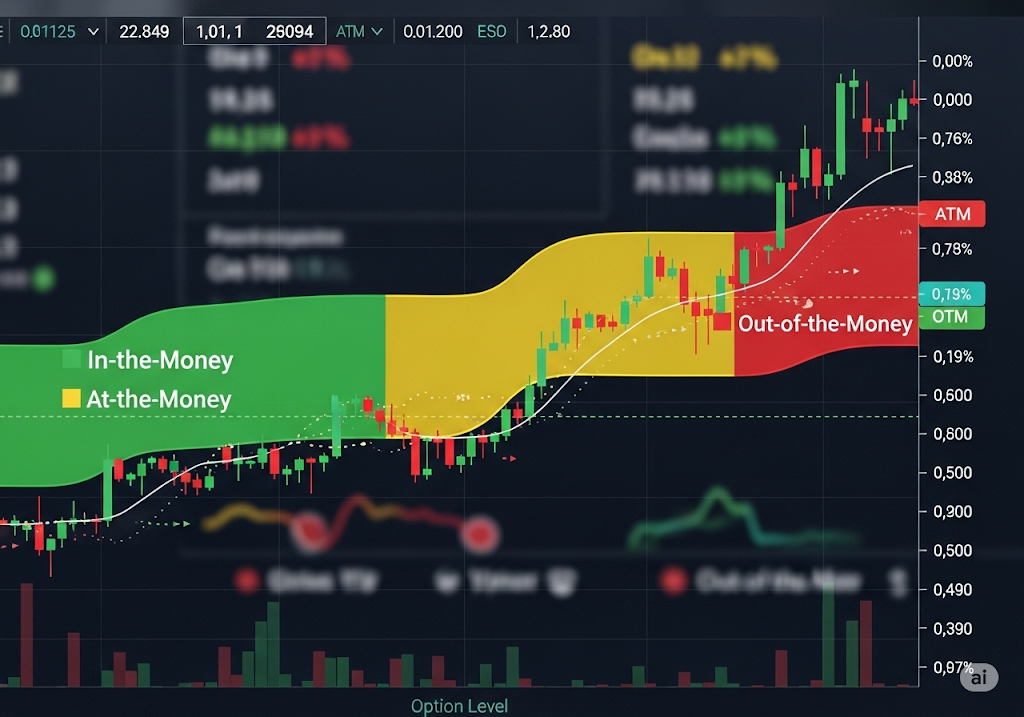What Are Different Levels of Options Trading?
Options trading allows investors to speculate on or hedge against the volatility of the stock market, but it’s not a one-size-fits-all activity. The different levels of options trading empower traders with varying degrees of risk and strategy complexity, from basic transactions to advanced trading tactics.
What Is Options Trading?
Options trading allows traders to speculate on the direction of stock prices or hedge their investment portfolio against potential losses. Each option contract typically represents 100 shares of the underlying stock, allowing traders to control large amounts of stock with a relatively small amount of money.
When you buy an option, you pay a premium for the right to buy (call option) or sell (put option) the underlying asset at a predetermined price (strike price) before the option expires. This strategy can be used to generate income, manage risk, or leverage your investment to maximize gains.
Different Levels of Options Trading
Options trading is tiered into several levels of complexity and risk, each requiring specific qualifications from traders and approval from brokers. These levels range from basic options trades, like buying and selling options, to more complex strategies involving multiple positions and margin accounts.Understanding these tiers is crucial as each level unlocks new strategies but also introduces more risk. For example, a trader must understand the rights and obligations associated with options, such as the potential for assignment and exercise of options. As traders advance through levels, they must ensure they have sufficient knowledge and financial resources, particularly if using margin, to manage these risks effectively.
Level 1: Covered Calls & Protective Puts
Level 1 options trading is the most basic and accessible level, ideal for beginners. This level allows traders to execute covered calls, where you sell a call option on a stock you own, and protective puts, where you buy a put option to protect against losses in your stock holdings. These strategies are primarily used for generating additional income or safeguarding existing stock positions against potential downturns. They involve limited risk because they are covered by the ownership of the underlying stock or sufficient cash.
Level 2: Limited Risk Spreads & Straddles
The second level introduces options strategies that involve slightly more complexity and risk. At this level, traders can engage in limited risk strategies such as spreads and straddles. These involve combining two or more options to limit the maximum potential loss. For example, a call spread uses a purchased call option combined with a sold call option to cap potential losses while providing room for profit within a specific price range.
Level 3: Unlimited Risk Spreads & Straddles
Level 3 trading ups the ante by allowing strategies that can expose traders to unlimited risk, such as selling naked puts or calls—options sold without owning the underlying asset or having a covering position. These strategies require a thorough understanding of market movements and high risk tolerance, as they can potentially lead to significant financial losses.
Level 4: Naked Options & Combinations
The highest and most advanced level, Level 4, permits the execution of complex strategies involving multiple options and positions, such as selling naked options not covered by stock holdings or other securities. Traders at this level are typically very experienced and can manage and understand the substantial risks from these open, unlimited exposure trades.
Example: PAO order and PAE order start an Auction

How Are Trading Levels Assigned?
Trading levels are assigned by brokerage firms based on several factors, including an investor’s experience, trading objectives, financial resilience, and risk tolerance. These levels determine the types of options strategies that investors are permitted to execute, serving as a form of risk management for both the trader and the brokerage.
Purpose of Options Approval Levels
Options approval levels are crucial because they help protect both the investor and the brokerage from excessive risk. By assigning levels based on the trader’s qualifications, brokers can ensure that investors do not engage in options trading strategies that are too complex or risky relative to their experience and financial situation.
What Each Options Trading Level Allows
Each level of options trading unlocks certain types of strategies that can be used to trade, manage risk, or speculate in the markets. From simple covered calls at Level 1 to complex multi-leg strategies at Level 4, each level offers specific permissions that align with the trader’s approved risk exposure.
Strategies for Each Level of Options Trading
Developing a strategy within your approved level can maximize your trading effectiveness. Beginners might focus on mastering covered calls before moving on to more complex spreads and straddles as they gain confidence and experience.
The flexibility options trading allows is crucial for traders who operate under financial constraints, such as the 25K day trading rule. By understanding and utilizing different options strategies—from basic calls and puts to more complex spreads and combinations—traders can tailor their approaches to fit their financial situation and trading goals.

Figure 1, Source: option standard level
Periodic Auctions bring natural liquidity together and pools all available interest to trade within the spread. Pairing off like-minded participants and trading at midpoint or within the spread in an auction rather than the continuous book has resulted in greater execution quality over the period.
Options trading is important because it provides powerful tools for leverage, risk management, income generation, and versatile speculation across various market conditions. However, due to their complexity and inherent risks, they are not suitable for all investors and require a significant commitment to education and careful risk management.
How to Choose the Right Level for Options Trading
Choosing the appropriate options trading level involves assessing several key factors. Traders should consider their experience with options, their understanding of various strategies, and their comfort with the associated risks. It is essential to evaluate the margin requirements as higher levels typically allow you to use margin, increasing potential returns but also potential losses.
Traders should review the services and tiers offered by their brokerage accounts, ensuring they meet the requirements for the desired option approval level. Traders must be members of a broker that aligns with their trading needs and offers the necessary support and educational content to trade options successfully.
Assess Your Experience
Evaluating your own experience with stock and options trading can help you identify the right level of options trading to start with. Beginners should start at Level 1 to understand the basics before progressing.
Understand the Levels
Familiarize yourself with what each level permits and requires. Knowing the risks and strategies associated with each level can help you make informed decisions about trading.
Determine Your Risk Tolerance
Your comfort with potential financial loss plays a critical role in deciding which trading level is appropriate for you. Lower levels carry less risk, suitable for those with lower risk tolerance.
Educational Commitment
Committing to learning more about options strategies, market conditions, and the technical analysis required at higher levels is essential for safely advancing your trading capabilities.
Evaluate Your Financial Situation
Consider whether you have the financial resources to cover potential losses, especially at higher levels where the risk of losing money increases.
Set Clear Investment Goals
Consider whether you have the financial resources to cover potential losses, especially at higher levels where the risk of losing money increases.
Review Brokerage Requirements
Each broker might have different criteria for assigning trading levels. Review these carefully to ensure you meet the requirements for your desired level.
Stay Updated on Market Conditions
Continuous monitoring of market conditions and adapting your options trading strategies accordingly can help manage risk and exploit potential opportunities effectively.
There are important risks associated with transacting in any of the Share Market products discussed here. Before engaging in any transactions in those products, it is important for market participants to carefully review the disclosures and disclaimers. These products are complex and are suitable only for sophisticated market participants. In certain jurisdictions, We are only guiding to investment professionals, certified sophisticated investors, or high net worth corporations and associations. These products involve the risk of loss, which can be substantial and, depending on the type of product, can exceed the amount of money deposited in establishing the position. Market participants should put at risk only funds that they can afford to lose without affecting their lifestyle. © 2025 AIMARKETTRADE. All Rights Reserved.
